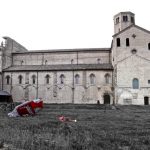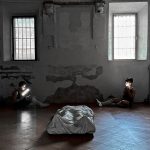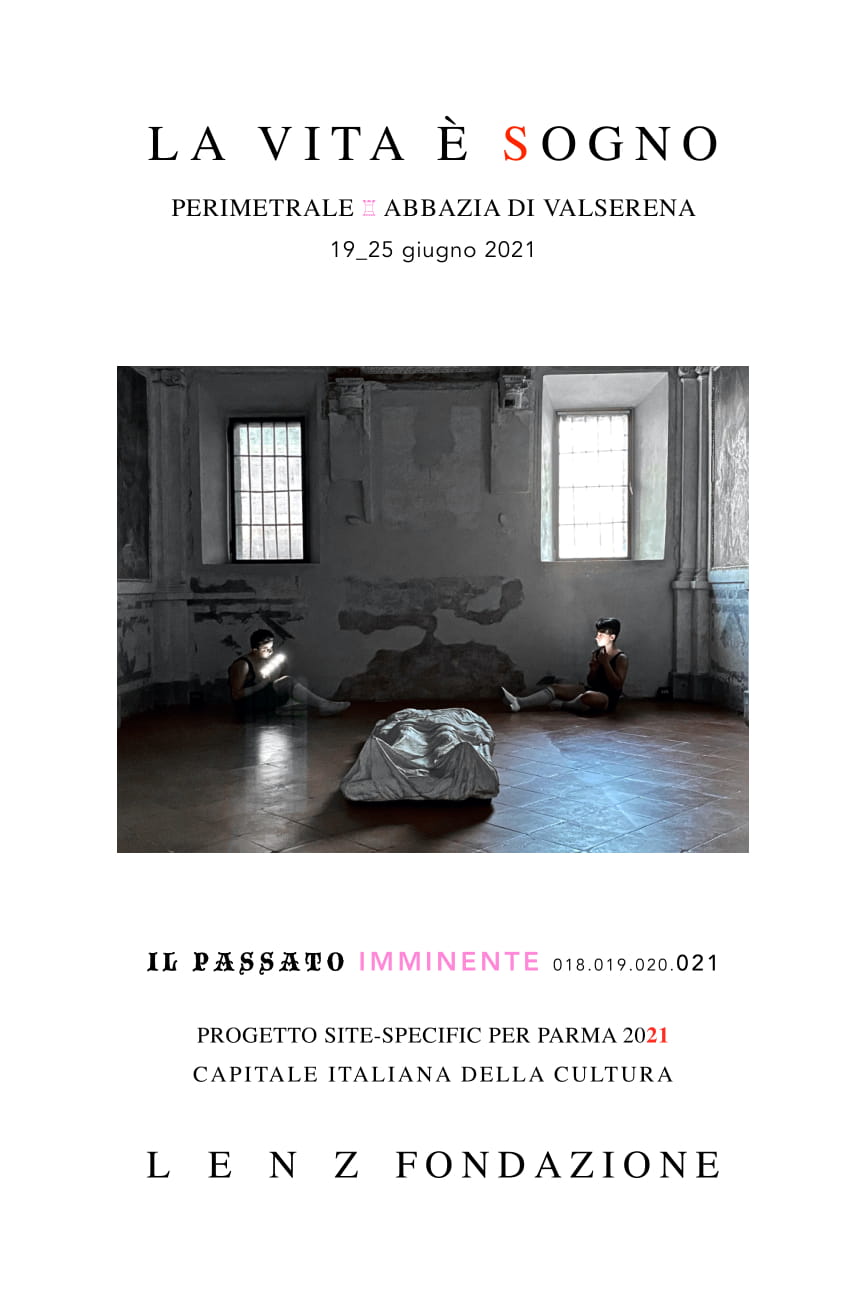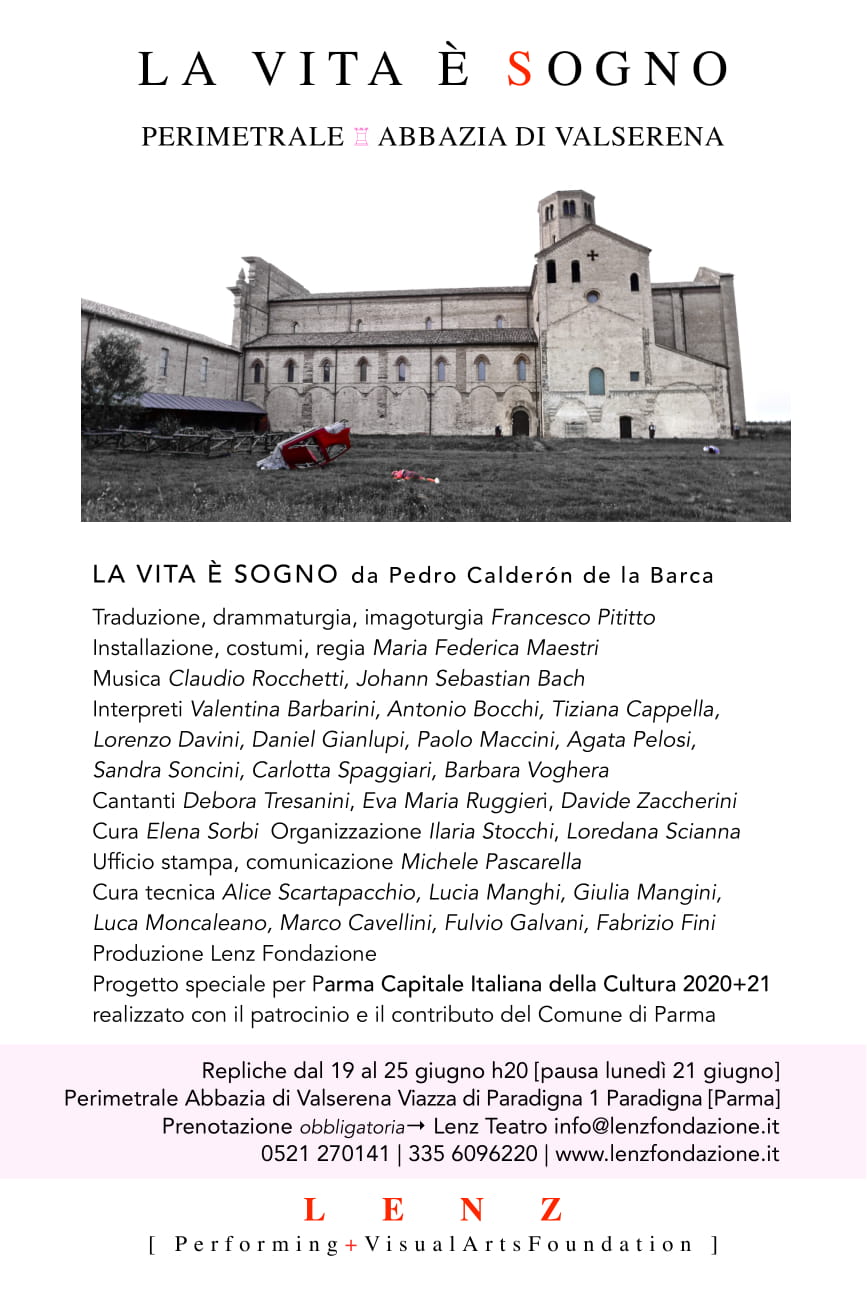
LA VITA È SOGNO (Life is dream)
LA VITA È SOGNO is part of IL PASSATO IMMINENTE (The Unending Past)
Four-year project 2018-2021 > site-specific performative, choreographic, visual and sound installations conceived and directed by Maria Federica Maestri and Francesco Pititto.
2018 THE GREAT THEATER OF THE WORLD
The first part of the three-year project was carried out in the great halls of the Neoclassical Gallery and in the Teatro Farnese; over twenty artists, including performers from the Lenz ensemble and harpsichordists from the Arrigo Boito Conservatory in Parma, gave body to the scenic rewriting of the visions of the Great Theater of the World.
2019 LA VIDA ES SUEÑO
The second chapter was set up in the new North Wing of the National Gallery, where the precious Baroque collection is kept. An impressive installation of hospital beds dialogued with the functional structures designed in the 1970s by architect Canali and sacred depictions by Lanfranco, Schedoni, Spada, Ribera, Murillo, and van Dyck.
2020 TRILOGY CALDERÓN < HIPÓGRIFO VIOLENTO | FLOWERS LIKE STARS? | OTHER STATE
The third chapter of the Imminent Past consists of three solos inspired by Calderón’s works: Life is a Dream and The Constant Prince. Set in the magnificent spaces of industrial origin of Lenz Teatro, they are interpreted by the historical actresses of the ensemble.
2021 LIFE IS A DREAM
The fourth part of the project will be installed from June 19 to 25, 2021 in the historical-rural landscape of the Abbazia di Valserena, or Abbazia di San Martino dei Bocci, commonly known as Certosa di Paradigna, a former Cistercian abbey with Gothic and Baroque forms located in Paradigna, a hamlet on the northern outskirts of Parma. Founded in 1298 and deconsecrated in 1810, since 2007 it has been the seat of the CSAC – Communication Studies and Archives Center of the University of Parma.
In the new production at the Abbey of Valserena, as in the two site-specific autos sacramentales Il grande teatro del mondo and La vida es sueno at the Complesso Monumentale della Pilotta in Parma, the sensitive actor – together with adolescent and elderly performers – becomes the central figure of the dramaturgy, of the mise en site, of the profound sense of the theological-philosophical drama. Already in the autos, the poetic presence of the figures of the Poor Man and the Man prefigured the protagonist Sigismondo in the double guise of man/child. In the drama, once again, the themes of illusion, of mortal time “from the cradle to the grave” and of “free will” are developed according to the privileged vision of innocent sensibility, of the unmediated act, of the word that presents itself as sound even before defining itself in the sense.
The spatial transposition of the multiple conceptual, emotional and moral fields manifested in the monumental Factory of the Abbey of Valserena will give plastic volume to the dramaturgical oscillation between reality and dream, between freedom and constraint, between self-determination and destiny. To interpret the complexity of the work are the sensitive actors, the historical actresses of Lenz and the child performers, guardians of an aesthetic perimeter that reclaims the cold beauty of the margin, the languid power of loss, the dry physics of pain. Through the multiple artistic forms – installations, performances, video projections, musical dramaturgies between baroque, modern and contemporary – this perturbing, noisy, disorganic, disheveled dimension will expand beyond the boundaries of the subject and will be transfused into a new common time released from conventions and social norms, necessary to imagine, or to dream, as in the case of the young protagonist, a possible poetic and political transformation of collective identity.
In Life is a Dream, the protagonist – Prince Sigismund – lives locked up in a tower, excluded from birth from the human consortium, because destined by an astral design to be evil. The father-king decides to put the young prince to the test of the world, and in order to be certain that his son is capable of pursuing good, and therefore of succeeding to the throne, he gives his son back his freedom. Temporarily reintegrated into the social game, through an artificial sleep, the prince will have to prove that he is capable of reversing his destiny. Awakening in the palace, Sigismondo reveals himself incapable of controlling instincts and desires, of behaving appropriately towards authority, of respecting norms, rules and laws, of perceiving the difference between good and evil. Thus confirming the astral omen, he will once again be condemned to confinement in the tower and to social marginalization. Only the people, in open contrast with the decisions of the king, will understand the subversive nature of the prince and will lead him to the head of the army to overthrow the old power. Experienced the bloody violence of the real and the danger of chaos, the prince chooses to absolve the sins of his father, and dissolved the human and political conflict, he decides to restore the old hierarchies putting an end to the dream of revolution.
LIFE IS DREAM
from Calderón de la Barca
Translation, dramaturgy, imagoturgy | Francesco Pititto
Installation, plastic elements, direction | Maria Federica Maestri
Music | Claudio Rocchetti, J.S. Bach
Interpreters | performers Valentina Barbarini, Frank Berzieri, Antonio Bocchi, Tiziana Cappella, Lorenzo Davini, Daniel Gianlupi, Paolo Maccini, Agata Pelosi, Sandra Soncini, Carlotta Spaggiari, Barbara Voghera; singers Debora Tresanini (soprano), Elena Maria Giovanna Pinna (soprano), Eva Maria Ruggieri (contralto), Davide Zaccherini (tenore)
Care | Elena Sorbi
Organization | Loredana Scianna, Ilaria Stocchi
Communication and promotion | Michele Pascarella
Technical care | Alice Scartapacchio, Lucia Manghi, Giulia Mangini, Luca Edoardo Moncaleano, Fulvio Galvani, Marco Cavellini, Fabrizio Fini, Elisabetta Zanardi
Production | Lenz Foundation
Project for Parma 2020+21 Italian Capital of Culture













